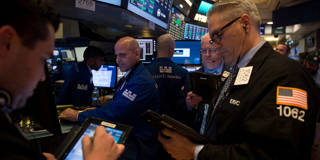The Global Recovery’s Downside Risks
Recent economic data from around the world suggest that growth could soon accelerate, now that the global economy has weathered multiple crises over the past two years. And yet the possibility of another global slowdown – if not an outright stall – cannot be ruled out.
NEW YORK – For the past two years, the global economy has been growing, but it has swung between periods of rapid expansion and deceleration. During this period, two episodes, in particular, caused US and global equity prices to fall by about 10%. Is a pattern emerging, or is a fitful global recovery set to stabilize?



NEW YORK – For the past two years, the global economy has been growing, but it has swung between periods of rapid expansion and deceleration. During this period, two episodes, in particular, caused US and global equity prices to fall by about 10%. Is a pattern emerging, or is a fitful global recovery set to stabilize?